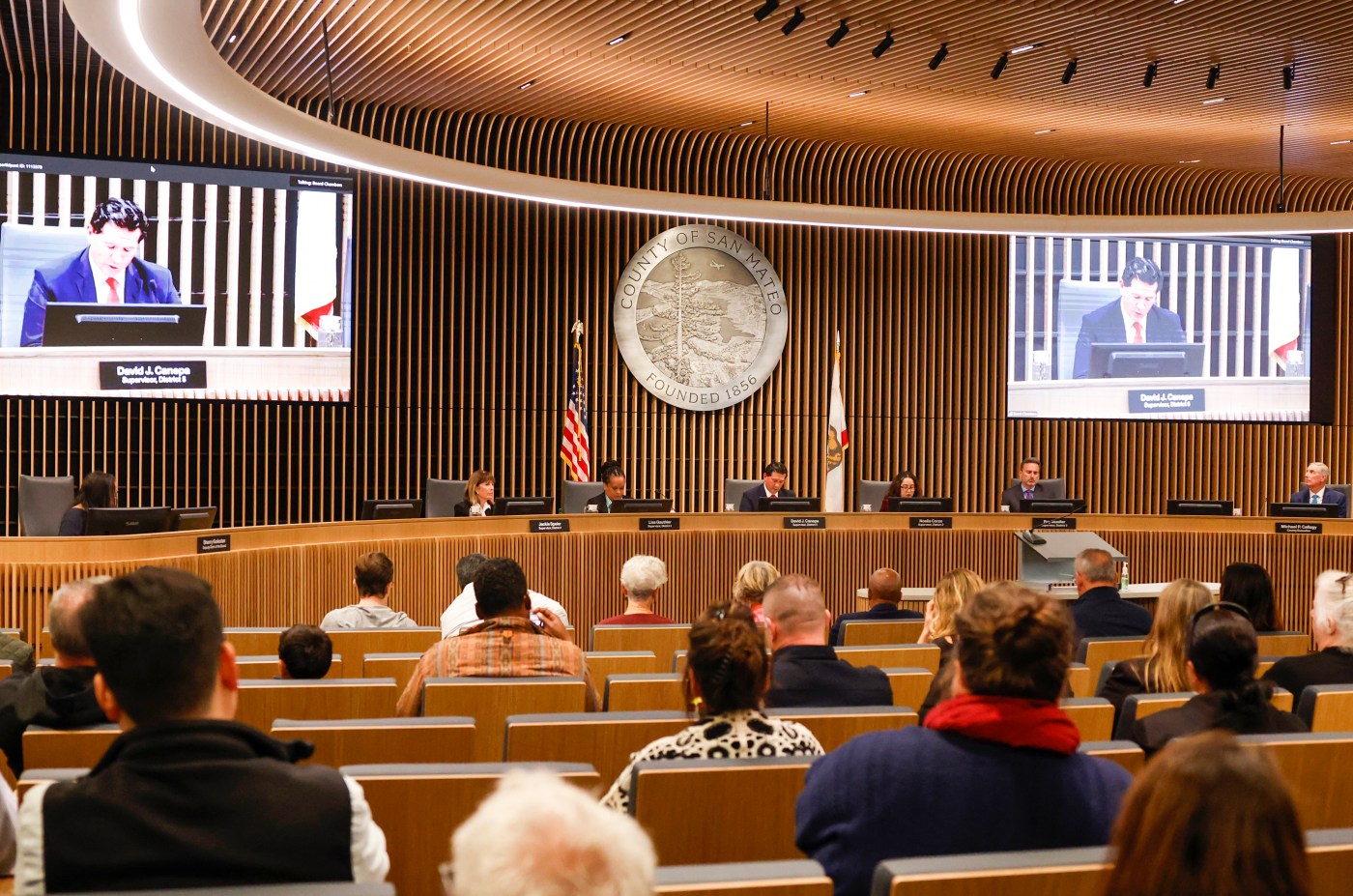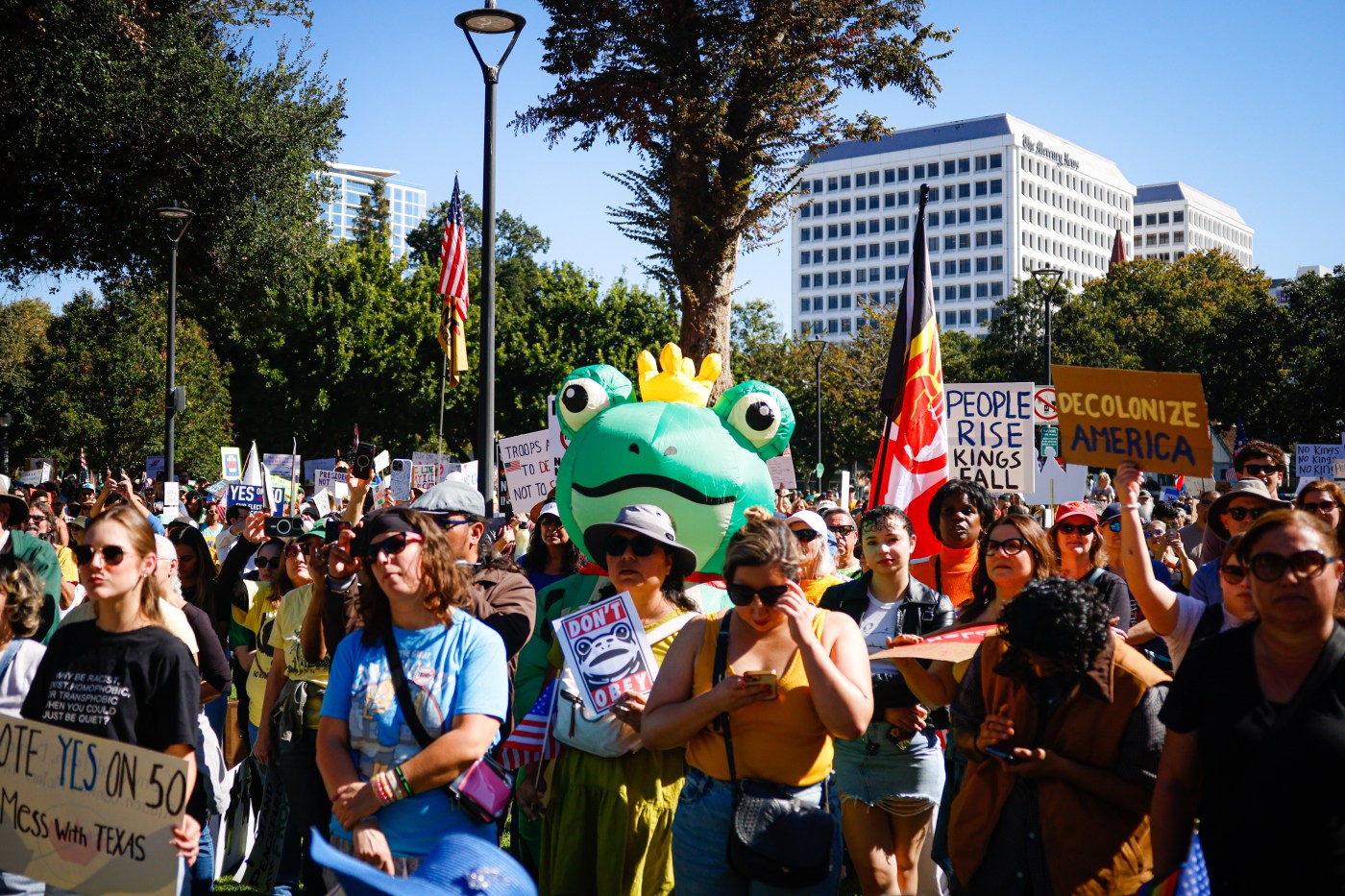BERKELEY — Learning a new language can sometimes be a hobby or requirement, but for Brian Linebaugh, it became a lifelong pursuit that led him across the world and ultimately inspired a documentary that was recently featured at an international film festival.
The film, “Beyond Words — Stories from Tamil Landscapes,” celebrates the rich traditions, arts, and culture of the Tamil people. It had its global premiere at the Jaipur International Film Festival in January and will be featured at the South Asian Film Festival of Montréal in the coming weeks.
Linebaugh, a Berkeley native, had no exposure to Tamil, an Indian language primarily spoken in the state of Tamil Nadu, India. His first introduction to Tamil was during his senior year in high school, when he overheard a group of students speaking the language but had no clue what it was.
Related Articles
What to watch: Set sail to ‘Wallis Island,’ you’ll be glad you did
Demonstrators gather at Santa Cruz theater to oppose ‘October 8’ screening
Remembering Val Kilmer — where to watch his best films
Review: ‘Freaky Tales’ a worthy salute to Oakland’s creative energy
Val Kilmer, film star who played Batman and Jim Morrison, dies at 65
“I didn’t know what they were saying exactly … but it was such an exciting-sounding language,” said Linebaugh in an interview with this news organization. “It’s like if you hear some bebop jazz for the first time.”
In order to learn the language, Linebaugh started out with books, audiotapes, and watching Tamil movies but quickly realized that learning the language was challenging. Undeterred, Linebaugh decided to travel to Madurai, one of the oldest cities in India with deep-rooted Tamil culture and popularly referred to as a “city that never sleeps.”
“In 1993, I decided to go to Madurai and try to immerse myself in the city and learn the language,” said Linebaugh. “I went every summer during my undergraduate years at California State University in Chico.”
Linebaugh, through some friends, found a retired Tamil professor, Dr. K.V. Ramakoti, to teach him the basics of the language. He then spent a few summers alternating between Madurai and Malaysia, a nation with a big Tamil-speaking community outside of India.
In Malaysia, he lived and worked at a local rubber plantation and learned the language faster from Tamil-speaking plantation workers.
“I was doing the work, I was collecting the rubber, I was doing fertilization of the trees, I was amongst the workers all day, every day. And so that’s why I learned a lot,” said Linebaugh.
One of the most challenging aspects of learning Tamil for Linebaugh was the difference between the written and spoken language.
“The gap seems to be wider than that of most languages, probably because Tamil is so ancient, being one of the world’s classical languages still spoken today, the spoken language has had millennia to develop so much variation,” said Linebaugh.
He also found Tamil’s phonology to be the most difficult.
“The notion of short and long vowels doesn’t really exist in English. In Tamil, if you hold a vowel just a bit longer, you can get a different meaning,” said Linebaugh. “If you compare ‘pooy sonnaan’ to ‘poy sonnaan,’ the only difference is the duration of the ‘o.’ The former means ‘he went and told,’ the latter means ‘he told a lie.’”
Linebaugh enrolled at UC Berkeley and earned his master’s degree in 1997. He specialized in Tamil language and literature under the guidance of Professor George Hart, a Ph.D. holder in Sanskrit and Indian Studies from Harvard University.
In 2021, Linebaugh, a data architect, and his wife Janaki Seetharaman moved to Florida. The pandemic eventually gave the couple an excuse to pursue Linebaugh’s fascination with Tamil dialects.
“We went to Tamil Nadu to film a documentary about the various Tamil dialects and after three months, we came home and reviewed the footage and tried to put something together, editing it,” said Linebaugh.
The couple, who had no previous filming and editing experience, felt that focusing on Tamil dialects alone was insufficient.
They expanded the project and pivoted its focus on the vibrant Tamil culture, traditional arts, and folk performances while embedding dialects used by artisans and performers.
“The Tamil dialects became more of an implicit part of the film. We were no longer trying to highlight the linguistic markers of the language. Instead, we have everyone talk about their art and culture,” said Linebaugh.
The duo returned to India to film more footage to bring to life regional arts, such as street plays known as Therukoothu, shadow puppetry known as Tholpava Koothu, folk dances, and local handicrafts.
After months of filming and editing, the 62-minute documentary was completed at the end of 2024. Linebaugh is eyeing a streaming deal for the film, which would allow it to have wider outreach and educate people on the beauty of South Indian culture.
He also hopes the documentary will raise awareness.
“I think the film promotes the message of unity and is a call to action for people to keep preserving these arts,” said Linebaugh. “In 50 years, will there still be Therukoothu or Tholpava Koothu?”





